1.3 How do We Study the Earth?
Scientific Method in Geosciences: Multiple hypotheses, Multiple modes of Inquiry
How is science made in Earth Sciences? Why should you care? Even if you are not interested in becoming an Earth scientist, or any kind of scientist, understanding how science works is a source of empowerment. This is because science and scientific thinking are at the heart of our modern way of life and they influence every aspect of our lives. Understanding how science works can help you discern fact from fiction and inform your life choices and political decisions.
Modern science is based on the scientific method, the idea in science that phenomena and ideas need to be scrutinized using hypothesizing, experimentation, and analysis. This can eventually result in a consensus or scientific theory.
The scientific method, is a procedure that follows these steps:
- Formulate a question or observe a problem
- Apply objective experimentation and observation
- Analyze collected data and Interpret results.
- Devise an evidence-based theory.
- Submit findings to peer review.
1. Observation, problem, or research question
Let’s see how scientific inquiry works in Earth science.
The procedure begins when scientists identify a problem or research question, such as a geological phenomenon that is not well explained in the scientific community’s collective knowledge. This step usually involves reviewing the scientific literature to establish what is known and to consult previous studies related to the question.
Earth scientists can study processes they cannot observe directly, because they happen over long periods of time, or happened long ago, or happen in a remote location. An example of the last one would be the Earth’s core. To circumvent these challenges, Earth scientists have developed strategies to test their hypothesis, these strategies make up the scientific method of geosciences.
2. Hypothesis
Once the scientists define the problem or question, they propose a possible answer, a hypothesis: A proposed explanation for an observation that can be tested. Hypotheses must be testable and falsifiable.
To test hypotheses, scientists use methods drawn from other sciences such as chemistry, physics, biology, or even engineering.
3. Testing Hypotheses: Experiments and Revisions

The next step is developing an experiment: A test of an idea in which new information can be gathered to either accept or reject a hypothesis.
Earth scientists conduct classic experiments in the lab, however, an experiment can take other forms such as:
- Observing natural processes and their products in the field and comparing them to those found in the rock record. E.g., A sedimentologist studies how wind moves and forms dunes and different ripples in a desert. This knowledge helps her to interpret ripple structures found in rocks, and even to interpret dunes and aeolian processes from images collected on Mars!
- Studying changes across time or space. E.g., an atmospheric scientist analyzes how the composition of the atmosphere has changed since we started measuring it.
- Using physical models. This is more akin to the “classic experiment”. E.g., a team of scientists build a model for landslides using a long and steep ramp and flushing down different materials, and changing the ramp angle.
- Using computer models. E.g., climatologists develop computational models to study the climate system and make predictions. These scientific models undergo rigorous scrutiny and testing by collaborating and competing groups of scientists around the world.
- Considering multiple lines of evidence. To establish a scientific finding, all lines of evidence must converge, that means that all the results you collect using different methods must agree with the finding, the math must be sound, and the methods must be thoroughly described.
Regardless of what form an experiment takes, it always includes the systematic gathering of objective data. The scientists interpret this data to determine whether it contradicts or supports the hypothesis. If the results contradict the hypothesis, then scientists can revise it and test it again. When a hypothesis holds up under experimentation, it is ready to be shared with other experts in the field. The findings are scrutinized by the scientific community through the process of peer review.
4. Peer review, publication, and replication
Science is a social process. Scientists share the results of their research in conferences and by publishing articles in scientific journals, such as Science and Nature. Reputable journals and academic outlets will not publish an experimental study until they have determined its methods are scientifically rigorous and the evidence supports the conclusions. Before they publish the article, scientific experts in the field scrutinize the methods, results, and discussion; the peer review process. Once an article is published, other scientists may attempt to replicate the results. This replication is necessary to confirm the reliability of the study’s reported results. A hypothesis that seemed compelling in one study might be proven false in studies conducted by other scientists. New technology can be applied to published studies, which can aid in confirming or rejecting once-accepted ideas and/or hypotheses.
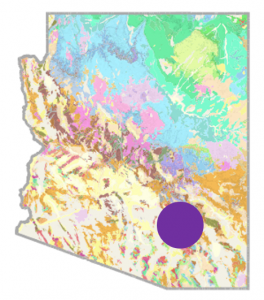 Backyard Geology: Wildfire in Saguaro National Park
Backyard Geology: Wildfire in Saguaro National Park
Arizona ranks high in the number of individual fires, as well as acres burned, every year. In 2020, Arizona ranked 3rd out of all states in both categories, with 2,524 individual fires and 978,568 acres burned. Below are the top 10 states for wildfires:
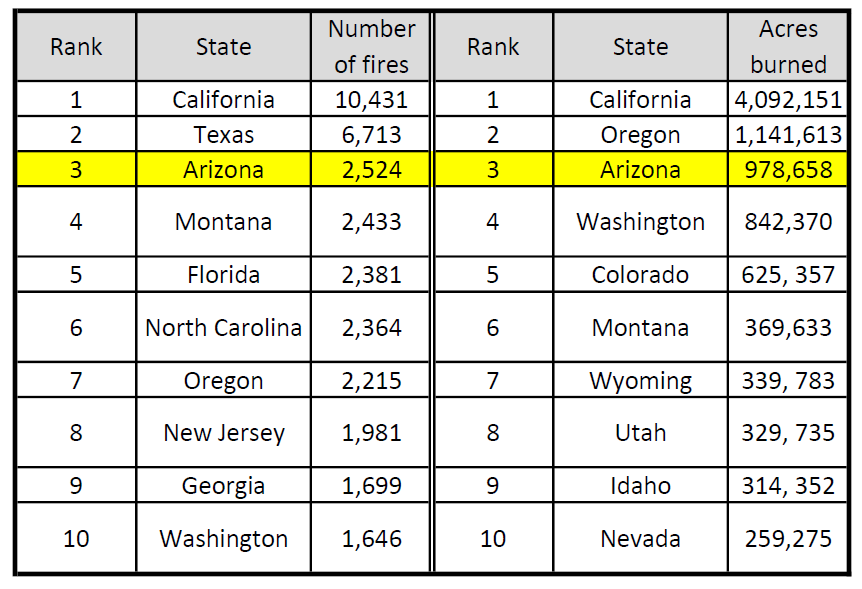
Why does Arizona have so many fires? Wildfire risk depends on many factors, including temperature, soil moisture, and the presence of vegetation (fuel) to burn. Certainly the dry, hot climate plays a role, and climate change intensifies drought conditions, but what contributes to the fuel available to burn?
In Saguaro National Park, an invasive noxious weed, called buffelgrass is changing the natural ecosystem and increasing the park’s susceptibility to wildfire. Buffelgrass, unlike native vegetation, evolved with fire and thrives under repeated burning. It outcompetes native vegetation for resources, supplies material that can be readily burned, and connects areas subjected to wildfires. Steps have been taken to remove buffelgrass, including physical weeding and also using herbicides. Some areas are remote, and herbicides are applied by helicopter. What effect does this application have?
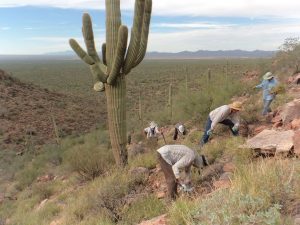
What geologists do: The United States Geological Survey (USGS) conducted a study to determine the effects of aerial dispersal of herbicide for buffelgrass control.
- Research Question: What are the potential transport and effects to aquatic ecosystems of the herbicides used for buffelgrass removal?
- Hypothesis: Herbicides will move into water environments and potentially be harmful to ecosystems and humans.
- Experiment: Three watersheds, treated with different amounts of herbicide, were regularly sampled to determine residual amounts of herbicides present in soil and water.
- Publication of results: While no water concentrations exceeded published criteria for human health or aquatic life, the authors acknowledge that it is a complex system that necessitates future study.
5. Theory development

In casual conversation, the word theory implies guesswork or speculation. In the language of science, an explanation or conclusion made into a carries much more weight because experiments support it and the scientific community widely accepts it. A hypothesis that has been repeatedly confirmed through documented and independent studies eventually becomes accepted as a scientific theory.
While a hypothesis provides a tentative explanation before an experiment, a theory is the best explanation after being confirmed by multiple independent experiments. Confirmation of a theory may take years, or even longer. For example, the scientific community initially dismissed the Continental Drift hypothesis first proposed by Alfred Wegener in 1912 (see Chapter 2). After decades of additional evidence collection by other scientists using more advanced technology, Wegener’s hypothesis was used as the framework and revised as the theory of Plate Tectonics.
In biology, theory of evolution by natural selection is another example. Originating from the work of Charles Darwin in the mid-19th century, the theory of evolution has withstood generations of scientific testing for falsifiability. It has been updated and revised to accommodate knowledge gained by using modern technologies, but the latest evidence continues to support the theory of evolution.
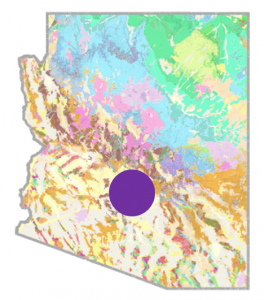 Backyard Geology: Science in Many Cultures
Backyard Geology: Science in Many Cultures
We have covered the scientific method of the geosciences. However, science is a human endeavor. For generations, Indigenous peoples have accrued empirical knowledge of the natural world, including the lithosphere. Greg Cajete uses the name Native Science to refer to “the collective heritage of human experience with the natural world” (Cajete, 2000). Geologic expertise served tribal peoples in many of the same ways that Western geology serves modern civilizations.
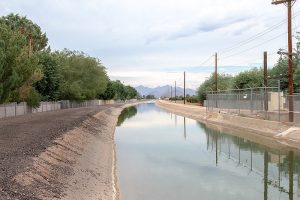
For example, Native Americans in Cascadia record volcanic events in stories, this transmits cross-generational awareness of volcanic hazards; the Muiscas in Colombia knew how to find, mine and process the gold to make beautiful art pieces; and the Puebloans of the North American Southwest managing limited water resources using an impressive net of canals that we still use for our benefit. Western and Native scientists can collaborate to further our understanding of the Earth systems and to remember how to live well on our planet.
Science is a dynamic process
Technological advances, breakthroughs in interpretation, and new observations continuously refine our understanding of Earth. We will never stop learning about our Earth. As new findings are published, we must revise and update our scientific knowledge and discard ideas that are proven false by new observations. Science is a living entity.
In conclusion, Earth scientists do not use a single, all-encompassing “scientific method”. Instead, multiple modes of inquiry respond to the complexity and spatial and temporal scales of Earth systems.
“The unique thing about the geosciences is that the knowledge, skills, and methods are brought together, refined, and evolved over time to make them most suitable for understanding the complex processes of Earth, its working in the past and the present, and its likely behavior in the future.” (Manduca and Kastens, 2012).
Key Takeaways
- Earth scientists work on challenging problems that face humanity on topics such as climate change, human impacts on Earth, and hazards to humans.
- Besides the classical laboratory experiment, Earth scientists construct models or use indirect methods to study the Earth.
- Scientific results are not valid or useful unless other scientists can reproduce them. Research results undergo scrutiny by the community before and after being published.
- The study of geological and environmental issues requires multiple disciplines and the interplay of multiple methods.
- Scientific thinking advances through collaboration and community.
GeoEthics
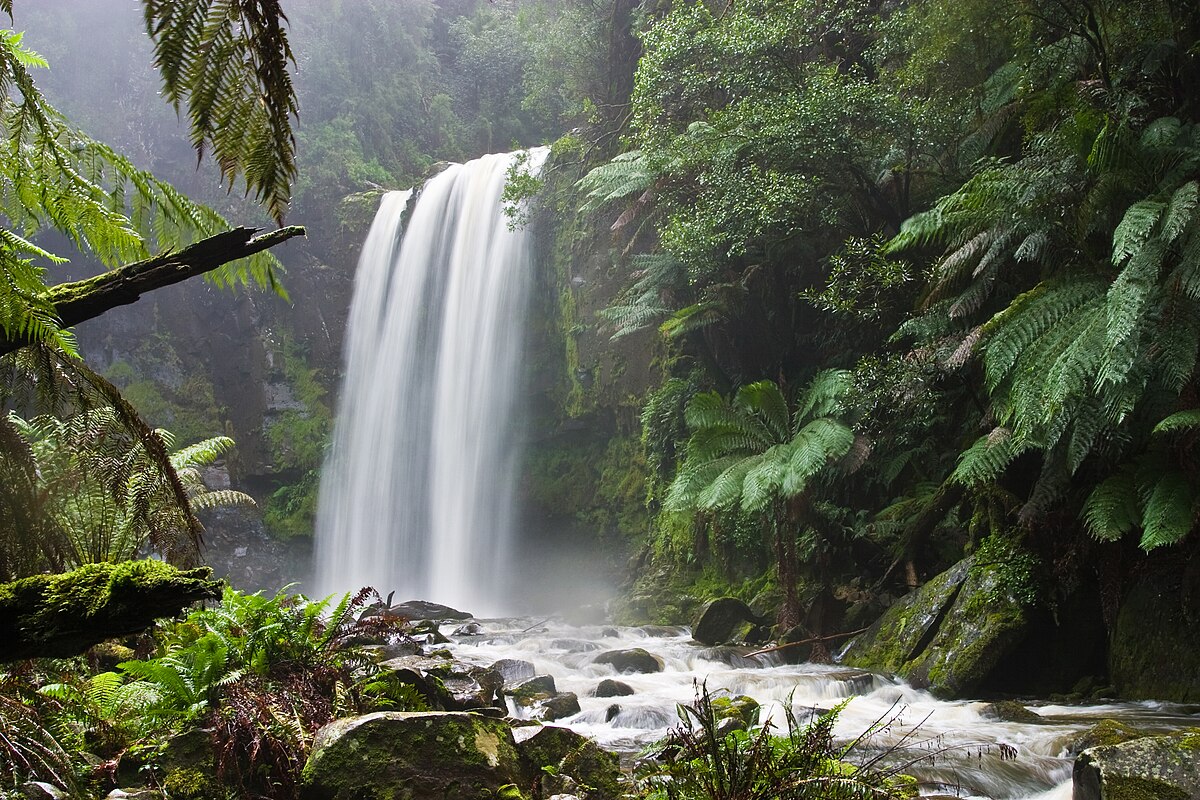
Geoscientists must act in ethical ways to contribute to the welfare of human beings. The saying “with great knowledge comes great responsibility” holds true for Earth and environmental scientists. Earth scientist must uphold high standards in research and conduct. The research and reflection upon the values which underpin behaviors and practices between humans and Earth systems is the arena of the “Geoethics” (Di Capua and Peppoloni, 2019). The International Association for Promoting Geoethics (IAPG) provide tools to “understand the complex relationship between human action on ecosystems and the decisions geoscientists make in the discipline that impact society, including improving the awareness of professionals, students, decision-makers, media operators, and the public on an accountable and ecologically sustainable development.” Source: https://www.geoethics.org/geoethics-school
All of us, human beings, have responsibilities to Earth. We do not exist apart from this planet and our behaviors impact other people, other species, the larger biosphere, hydrosphere, atmosphere, and lithosphere. Our actions impact the Earth system. As you progress in your learning, strive to think critically and to identify ethical issues. Do not be afraid to question and discuss your observations with your instructor and with peers. Just remember to do so respectfully, considering other points of view and practicing active listening.
***See 1.5 for Text and Media Attributions
A proposed explanation for an observation that can be tested.
The idea that any claim in science can be proved wrong with proper evidence.
related to the wind
layer of gases that surrounds a planet
A test of an idea in which new information can be gathered to either accept or reject a hypothesis.
An observation that is free of bias, i.e. anyone and everyone would make the same observation.
An accepted scientific idea that explains a process using the best available information.
A hypothesis that claims the Earth's landforms, specifically continents, move across the oceans over tens of millions of years.
The theory that the outer layer of the Earth (the lithosphere) is broken in several plates, and these plates move relative to one another, causing the major topographic features of Earth (e.g. mountains, oceans) and most earthquakes and volcanoes.

